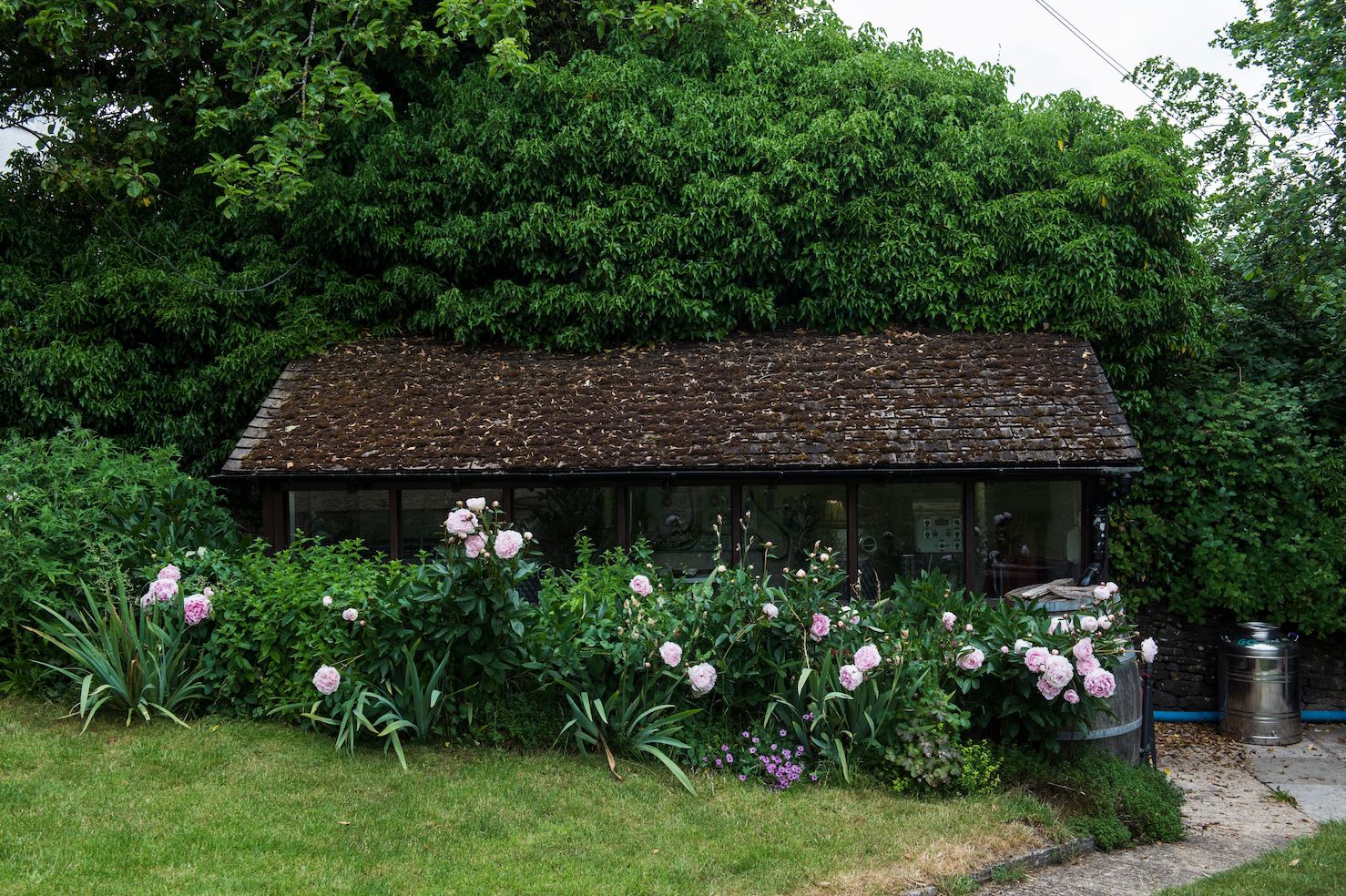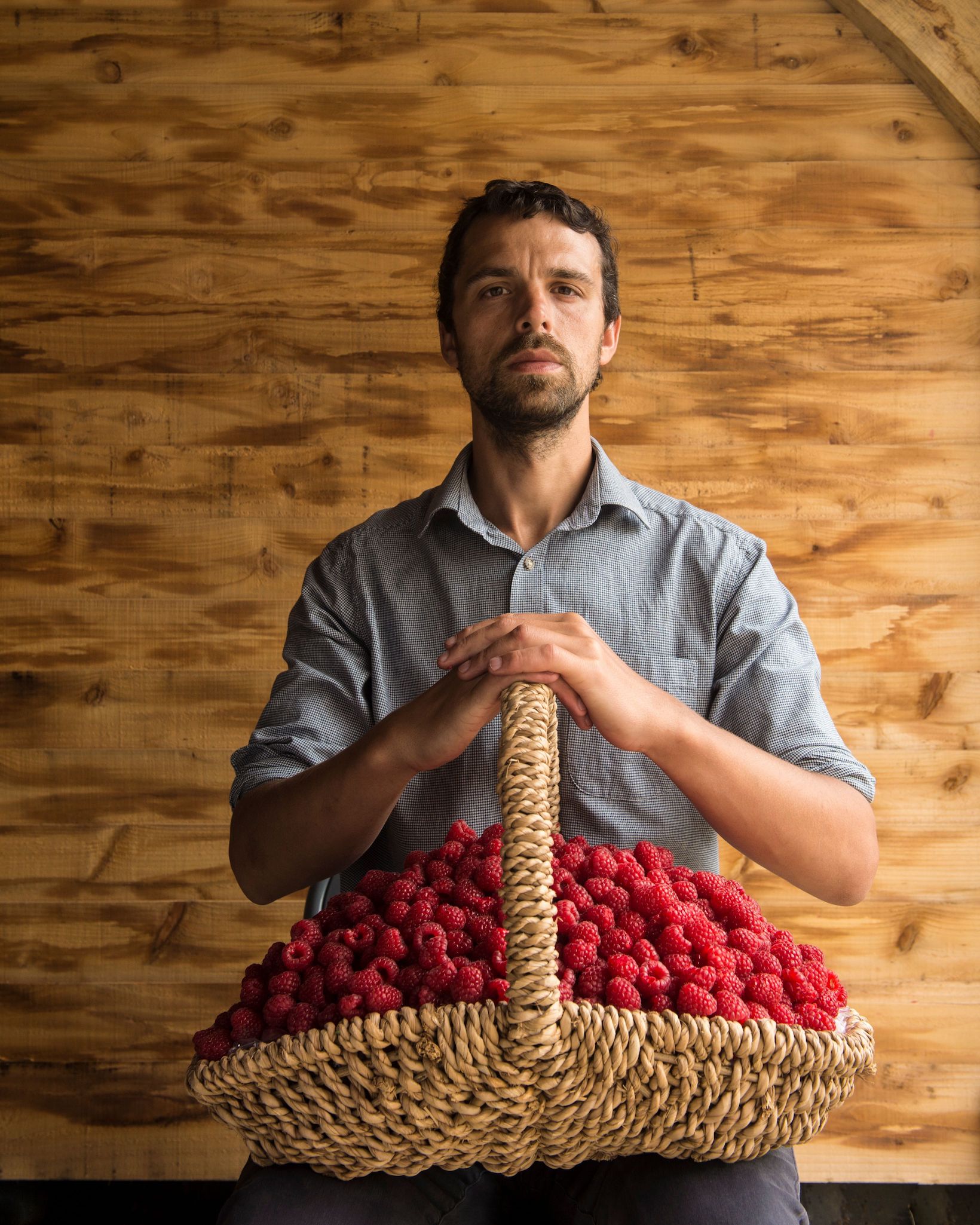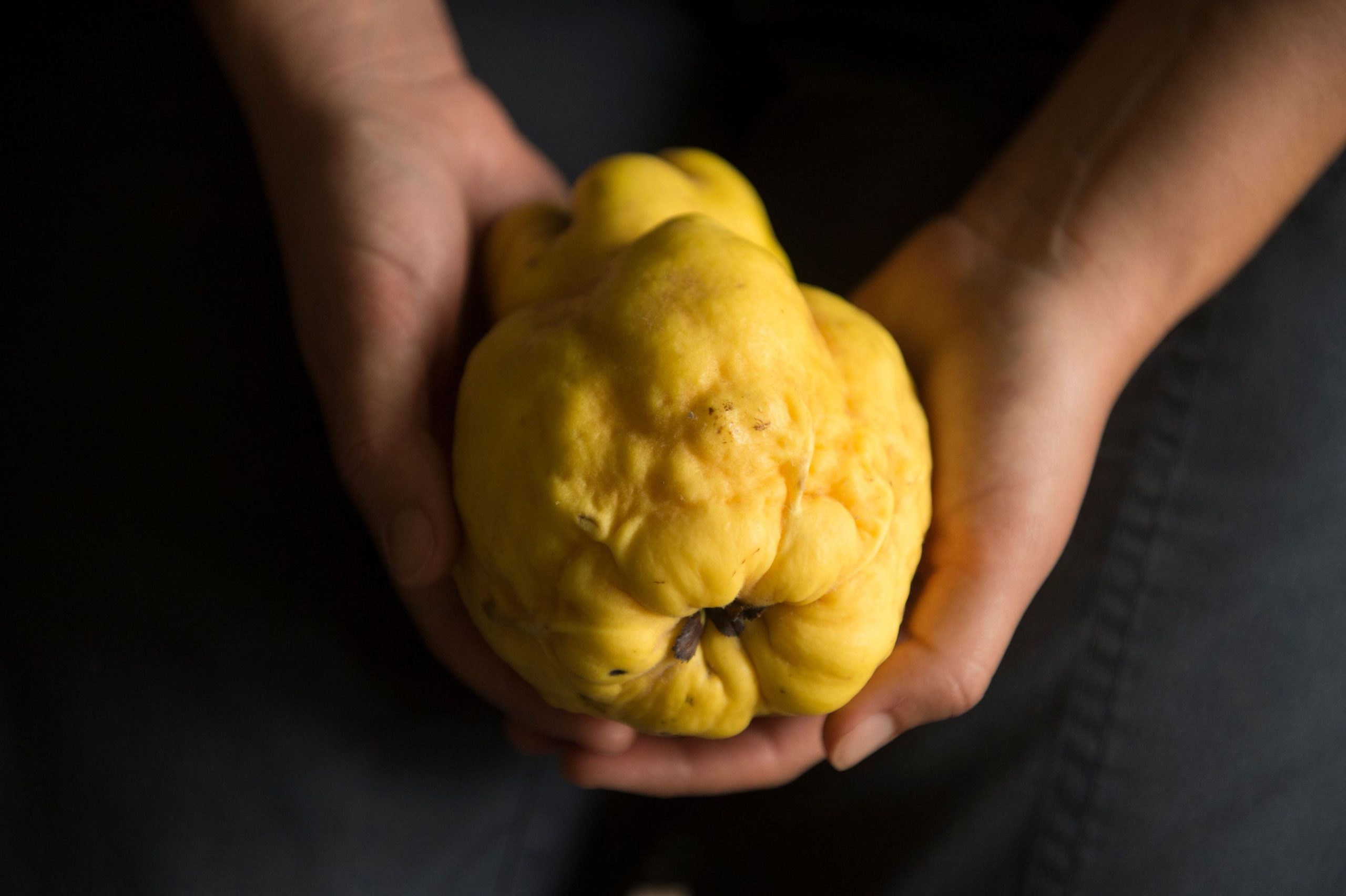Written by Barney Wilczak, Distiller & Owner of Capreolus Distillery in England’s Cotswolds

As I write, a spiralling thread of liquid runs from the still before me. Inside the still, the low wines (the concentrated liquid collected from previous distillations) of 3,250 kg quinces, the final distillation of the 2023 fruit season. A taste from a finger briefly interrupting that stream reveals an intoxicating panoply of rose water, citrus, pears, apple and blossom. More than simple descriptors of flavour, this liquid carries the sensation of life, a transportive link to that fruit’s peak moment of ripeness.
In this case, that moment was reached in October, hand grading every fruit, cleaning the fluff from every crack and crevice (it contains an essential oil that can become rancid if distilled), washing and crushing, starting a four month languorous wild fermentation before being dug out by hand and distilled. I expect to sit long into the evening to collect just 45 litres of crystalline liquid from what was once 3,000 litres of fruit mash, 1.5% of the original volume and absolute, pure essence.
This liquid carries the sensation of life, a transportive link to that fruit’s peak moment of ripeness.
The reason these spirits are so exciting for me is the sheer elevation of flavour brought about through that concentration of distillation. We follow the rarely walked path of only working from the fruits’ natural sugar, fermenting only with wild yeasts. This means that we can use in excess of 45kg fruit to produce each litre of Eaux de Vie (at drinking strength).

With up to 1.5kg worth of fruit essence in a standard 25ml measure we are suddenly brought face to face with aromas and flavours, normally imperceptible. They become indicative of not only the fruit, but also the parent plant, the climate, and the landscape in which they grow. By focusing our attention within 50 miles of the distillery we see cool climate tension radiating through the endlessly complex expressions of our local fruit.
But here lies the problem. Every elevation in positive expression is matched by negative flaws. The reason we rarely experience these spirits at the highest levels is that to be made well, they require a purely qualitative approach. In 2022, with my daughter 8 weeks old and bouncing beneath a tree in the garden where we work, we touched every single fruit of 3,000,000 raspberries as fingers felt for flaws and removed every single leaf, stem and hull. In the resulting Eau de Vie you can smell 1,000 seeds in your glass, crushed mint and raspberry leaf, lemon zest, and yes, the perfume of the most perfect fruit enveloping you – it is as if you were stood amongst the plants themselves.

Likewise, our field blend of 1,000 varieties of apples sings in unrepeatable expressions each year, the blackcurrant effervesces with the perfume of their leaves (although these herbaceous notes come purely from the fruit!) and our new Victoria plum takes me to almond-enriched violets. Endemic brilliance shines in the perry pears, all originally bred within 30 miles of us, a perfect illustration of terroir and with varietal difference easily equal to grapes. Each fruit carries nuance and great delicacy.
I expect to sit long into the evening to collect just 45 litres of crystalline liquid from what was once 3,000 litres of fruit mash, 1.5% of the original volume and absolute, pure essence.
Last year a dream came true in a collaboration with our great friends Little Pomona. Distilling cider from Foxwhelp, a local variety from the 1600’s, shows incredible intensity, with wild strawberries mixed with forest floor and almost Riesling-like aromas of fuel! You will be able to try it and our wider range of Eaux de Vie at The Real Wine Fair in April.

So, how do we consume these most precious of spirits? Classically they would be served as a digestif, cutting through fat and sweetness deftly whilst extending flavours found in fruits. A narrow but tall grappa or digestif glass elevates aroma without promoting alcohol. However, beyond our sommelier friends, it has been amazing to see them being adopted by bartenders and chefs, utilising their perfume. Just 2.5ml carries enough concentration to be carried headily through a 100ml glass of champagne, a few drops of Raspberry Eau de Vie inside a corresponding berry makes a sensational canapé…
In 2022, with my daughter 8 weeks old and bouncing beneath a tree in the garden where we work, we touched every single fruit of 3,000,000 raspberries
Sat in the old greenhouse that houses our stills, I occasionally take a moment to question the sanity of what we do. But with every single fruit we work with I find surprise and excitement. With just one chance each year this exploration feels like a very easy life’s work.
Barney will be pouring the following Capreolus Eau de Vie and gin at the Real Wine Fair in London 28-29th April (Get tickets for the fair here.):
- 1,000 Trees Apple Eau de Vie, 2021
- Perry Pear Eau de Vie, 2022
- Chestnut Barrel Aged Apple Eau de Vie, 2018
- Quince Eau de Vie, 2022
- Apricot Eau de Vie, 2022
- Damson Eau de Vie, 2021
- Plum Eau de Vie, 2022
- Raspberry Eau de Vie, 2022
- Blackcurrant Eau de Vie, 2022
- Bacchus Grape Eau de Vie, 2019
- Gooseberry Eau de Vie, 2021
- Little Pomona Foxwhelp Cider Eau de Vie (collaboration launching at the fair!)
- Garden Swift gin, NV
*
Interested in finding out more about the Capreolus products mentioned above? Contact us directly:
shop@lescaves.co.uk | sales@lescaves.co.uk | 01483 538820

